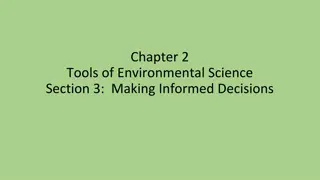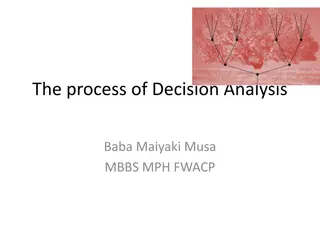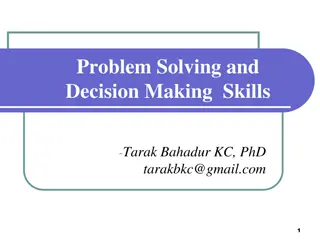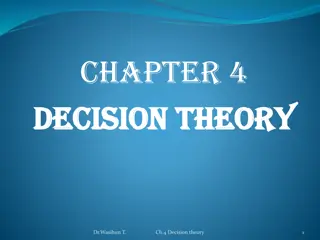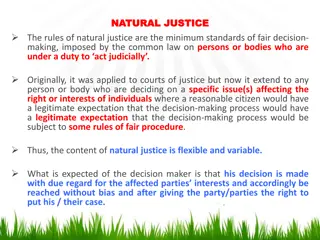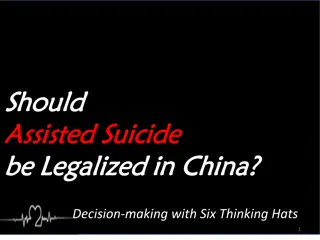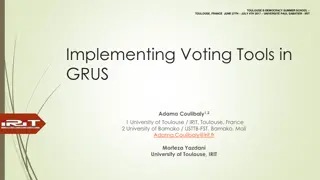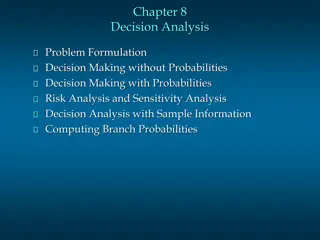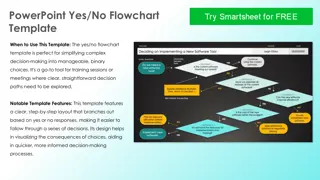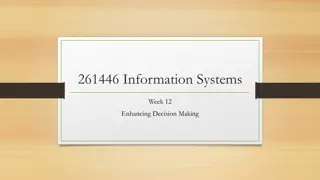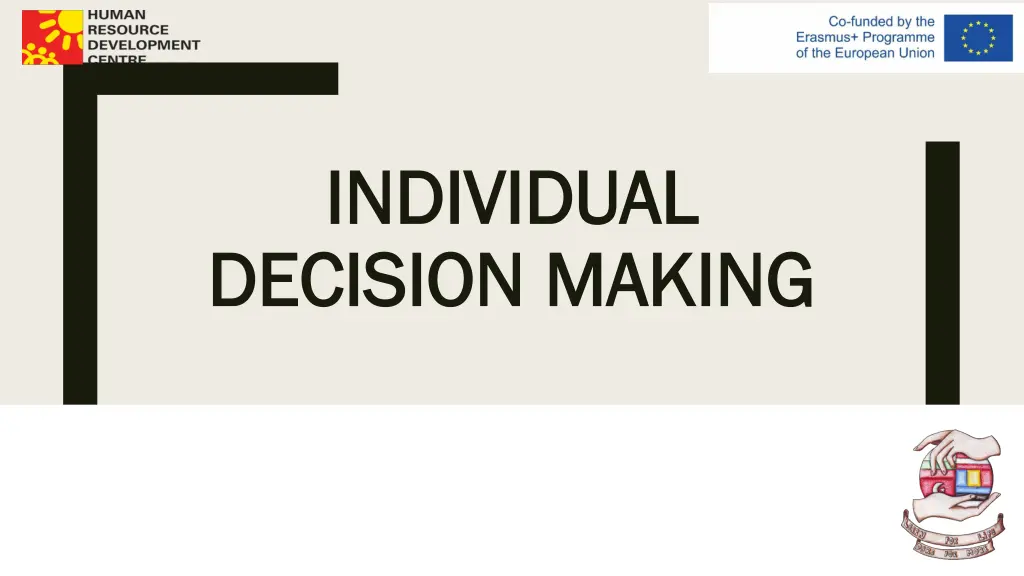
Effective Leadership and Decision-Making Insights
Explore the essence of leadership and individual decision-making, highlighting the qualities needed to be a successful leader. Gain a deeper understanding of the skills required, advantages and disadvantages of individual decision-making, and the significance of setting a clear vision and direction. Unlock the secrets to mobilizing others towards a common goal and learn how to make informed decisions as a leader.
Download Presentation

Please find below an Image/Link to download the presentation.
The content on the website is provided AS IS for your information and personal use only. It may not be sold, licensed, or shared on other websites without obtaining consent from the author. If you encounter any issues during the download, it is possible that the publisher has removed the file from their server.
You are allowed to download the files provided on this website for personal or commercial use, subject to the condition that they are used lawfully. All files are the property of their respective owners.
The content on the website is provided AS IS for your information and personal use only. It may not be sold, licensed, or shared on other websites without obtaining consent from the author.
E N D
Presentation Transcript
INDIVIDUAL INDIVIDUAL DECISION MAKING DECISION MAKING
What is to be a leader? The leader is one who mobilizes others toward a goal shared by leaders and The leader is one who mobilizes others toward a goal shared by leaders and followers. Leaders, followers and goals make up the three equally necessary followers. Leaders, followers and goals make up the three equally necessary supports for leadership. supports for leadership. Gary Wills Gary Wills The task of the leader is to get his people from where they are to where they have The task of the leader is to get his people from where they are to where they have not been. not been. Henry Henry K Kissinger issinger A leader is a dealer in hope. A leader is a dealer in hope. Napoleon Bonaparte Napoleon Bonaparte The only definition of a leader is someone who has followers. The only definition of a leader is someone who has followers. Peter Drucker Peter Drucker Leadership is influence Leadership is influence nothing more, nothing less. nothing more, nothing less. John C. Maxwell John C. Maxwell
Skills a good leader needs to Skills a good leader needs to have have Decision-making skills. Integrity and honesty Creativity Flexibility Positive attitude Communication Problem-solving Dependability Ability to teach and mentor
Being a leader Being a leader Implement decisions Make decisions Make decisions: Where to go? How to get there? Where to go? Where to go? Take advantage of opportunities Mitigate threats Set the direction: Vision , target
What is an individual decision making Individual decision making is the choices that are made only by an individual (Sager & Gastil Gastil 1999 1999). ). (Sager & In an organization, individual decision-making is when a single person, often a manager or executive, makes choices that affect the organization.
Advantages of individual decision making You can act quickly to solve problems. You're fully responsible for your decision's results, whether good or bad. You take full accountability for the decision's impact. You don't debate personal opinions during problem-solving. You efficiently use your time and effort in decision-making. You don't have to delegate tasks, minimizing interactions with hesitant people. You deal with less diversity in the group, which can improve decision-making and cohesion.
Disadvantages of individual decision making You see things only from your own point of view. You can't talk to others who've been in similar situations and could offer insights. Decision-making can be hard, especially if you're indecisive. Spotting decision-making problems can be tough. Individual decision-making lacks the motivation of successful teamwork. Relying solely on one person for decisions may lead to fewer creative solutions.
Decision analysis Decision analysis uses tools and research to make choices. Some decision-making tools are: decision matrix, decision tree, influence diagram, trial and error, etc. It works for both personal matters and complex business challenges.
Step of decision analysis Identify the problem and think about the options or solutions available to you. Research your options Create a framework to evaluate the results of your options Develop a decision model Find the expected value (what outcomes to expect in the long run)
Bobs dilemma Bob owns a t-shirt store. His hometown team is playing for the championship this weekend. He needs to decide whether to print some championship t-shirts to sell to the fans of his hometown if the team wins the championship. Bob has estimated that it will cost about $200 to make the t-shirts, but he thinks he can sell them for about $600. The local newspaper puts the probability of the hometown team winning at about 30%
Dont print the shirts Nothing ventured, nothing gained .or lost = $0 Hometown wins choice choice 30% Bob makes a profit = $400 Print the t-shirts ? ? Hometown loses 70% Bob loses investment = $200
How to decide? Calculate the expected value/ outcome Don t print the t-shirts expected outcome = 0 Print the t-shirts - expected outcome 30% of making profit of $400 (0.30 X 400 = $120) 70% of losing the $200 to print the t- shirts (0.7 X 200 = - $ 140) Sum all outcomes for print the t-shirt action plan : 120 140 = -$20
Sources https://www.indeed.com/ https://www.exforsys.com/career-center/decision-making/individual-decision- making.html https://www.indeed.com/career-advice/career-development/expected-value
The European Commission's support for the production of this publication does not constitute an endorsement of the contents, which reflect the views only of the authors, and the Commission cannot be held responsible for any use which may be made of the information contained therein.


